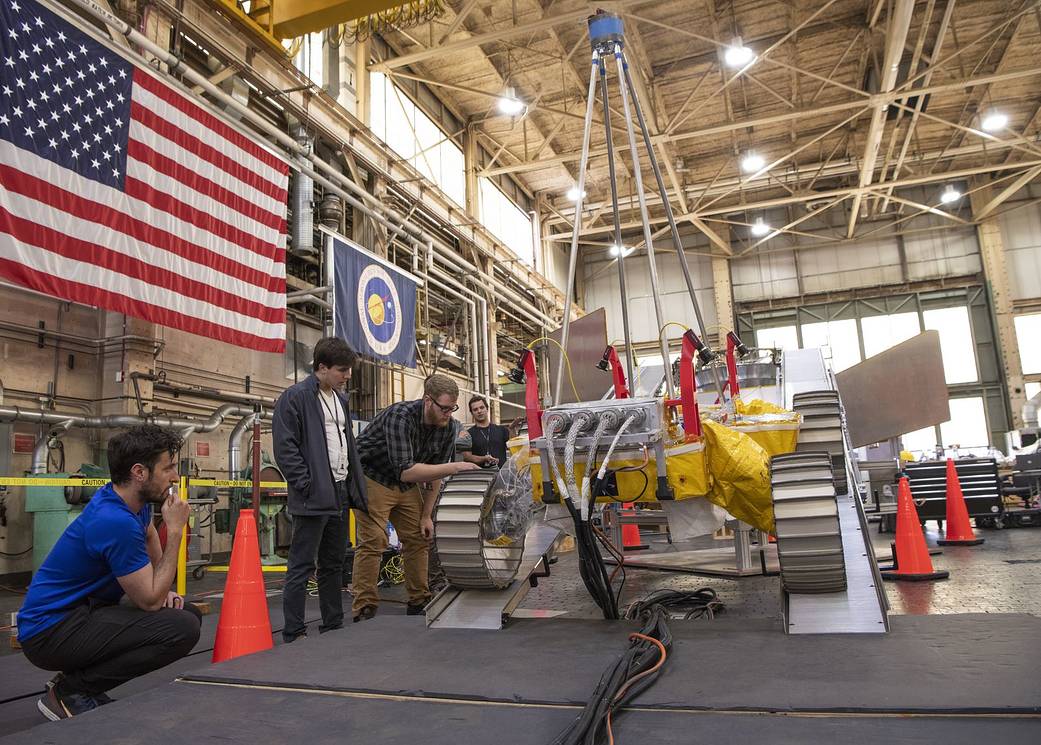Once it arrives at the Moon’s South Pole, NASA’s Volatiles Investigating Polar Exploration Rover (VIPER) will need to perform one of the trickiest parts of its 100-day mission: driving off the Astrobotic Griffin lunar lander and onto the Moon’s surface. After another successful round of testing this “egress” activity, VIPER is one step closer to being ready for launch.
VIPER has already completed several egress exercises, but recent tests at NASA’s Glenn Research Center in Cleveland were the most realistic yet – using the latest prototype lander and a robotic prototype of the Moon rover that will explore and map the lunar surface in search of resources that could sustain astronauts on future Artemis missions.
Since the goal of this test is to ensure VIPER’s able to handle the roll-out onto the lunar surface, engineers designed this prototype to be the most realistic model of its mobility systems while stripping down the rover’s heavier components. Because there’s less gravity on the Moon than on Earth, the rover needs to be lighter to more accurately simulate the conditions found on the lunar surface. Using this unique version of VIPER, the team can verify every aspect of the system is working as intended, and that when the real VIPER egresses, everything will go smoothly.
With several mission procedures still being fine-tuned, this won’t be the last time the VIPER team practices driving rover prototypes down the lander’s ramps. Future tests will take place in the Regolith Testbed at NASA’s Ames Research Center in California’s Silicon Valley, a facility capable of realistically reproducing the lighting and dusty terrain of the Moon’s environment.
While this test confirmed rover and lander systems are functionally ready to go, future tests will give the rover operations team an opportunity to practice lander egress in conditions as close as possible to what it will be like when they roll out VIPER and leave its first wheel marks on the Moon’s surface through NASA’s Commercial Lunar Payload Services initiative.
For news media:
Members of the news media interested in covering this topic should reach out to the NASA Ames newsroom.
Author: Frank Tavares, NASA’s Ames Research Center
Top image: Members of NASA’s Volatiles Investigating Polar Exploration Rover (VIPER) mission team conducting a test of the rover’s “egress,” or drive off the Astrobotic Griffin lunar lander and onto the Moon’s surface. Testing took place at NASA’s Glenn Research Center in Cleveland. Credits: NASA





























